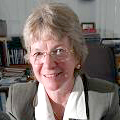Biography
Judith Howard began her University career in Bristol in 1963. As a final-year undergraduate student, she worked on the structure of a compound, tin tetra-iron-tetra carbonyl, which was the subject of her very first published work. From Bristol she moved to Oxford to work as a postgraduate student in Dorothy Hodgkin’s group. She returned to Bristol in 1969 along with her husband David whom she had met as a medical student in Bristol. She worked initially as a postdoctoral researcher with another of her mentors, Peter Woodward, with whom she had carried out her undergraduate research project. Together they provided the vital structural support, which underpinned the world-leading organometallic research for which Bristol was justly famed throughout the Gordon Stone era. As well as her work in association with this group she continued to develop her own interests, which were focused on developing methods for improving the precision of structures by using low temperatures to reduce thermal vibrations. She rose rapidly through the research career ladder in Bristol and when in 1991, the Department of Chemistry at the University of Durham had a vacancy for a Professor of Crystallography; she found that she was in the running.
Her laboratory in Durham rapidly became one of the best in the world, particularly for variable temperature X-ray work at temperatures as low as 13 degrees above absolute zero. As a result of this and other work her laboratory in Durham has become a focus for visitors from all over the world.
In addition to her research she has made huge contributions to myriad University, national and international committees, covering all aspects of academic and scientific affairs and to organization of many conferences at home and abroad. Her research and other contributions have been recognized through many awards and distinctions - she gained a Doctor of Science degree of the University of Bristol in 1986 to add to her B.Sc. degree, she was awarded a CBE for her contributions to science in 1996, the Royal Society of Chemistry Prize for Structural Chemistry in 1999, culminating in her election as a Fellow of the Royal Society in 2002.
